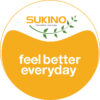Navigating the path of recovery after a stroke involves multifaceted considerations, and perhaps one of the most crucial aspects is the careful monitoring of a loved one’s diet and nutrition. The choices made in the realm of food play a pivotal role in the recovery process, influencing not only physical health but also cognitive function. In this blog, we will explore the essential strategies and considerations for monitoring your loved one’s diet and nutrition after stroke. From understanding dietary needs to practical meal planning and addressing potential challenges, this guide aims to provide a roadmap for fostering optimal recovery through mindful nutritional support.
Ways to Regulate Your Loved One’s Diet and Nutrition After Stroke
Understanding the diet and nutrition needs of your loved ones and ways to regulate them can help you support your loved one’s post-stroke recovery.
1. Understanding Diet and Nutrition After Stroke
The aftermath of a stroke often necessitates adjustments in dietary habits to accommodate specific health needs. Understanding these needs is the first step in effective nutritional support. Individuals who have experienced a stroke may face challenges such as dysphagia (difficulty swallowing), changes in taste perception, and altered metabolism. Additionally, some may be at an increased risk of conditions like diabetes or hypertension, further emphasizing the need for a tailored and informed approach to their diet.
2. Collaboration with Healthcare Professionals
A collaborative approach involving healthcare professionals is integral to creating a personalized and effective dietary plan. Consultation with a registered dietitian or nutritionist, in coordination with the primary healthcare team, can provide valuable insights into the individual’s nutritional requirements. These professionals can assess specific dietary needs, recommend modifications, and guide the development of a well-rounded and nourishing meal plan.
3. Balanced Nutrient After Stroke
A balanced intake of nutrition after stroke is crucial for supporting recovery. Emphasize a diet rich in fruits, vegetables, whole grains, lean proteins, and healthy fats. These components provide essential vitamins, minerals, antioxidants, and omega-3 fatty acids that contribute to overall well-being and aid in recovery. Paying attention to portion control and considering the nutritional value of each meal can help achieve a balanced and nourishing diet.
4. Hydration
Adequate hydration is fundamental for overall health and plays a vital role in the recovery process. Ensure that your loved one maintains proper fluid intake, as dehydration can exacerbate health issues and hinder recovery. Monitoring hydration levels becomes especially important if there are challenges with swallowing or if medications contribute to increased water needs.

5. Adapting to Swallowing Difficulties
Dysphagia, or difficulty swallowing, is a common challenge after a stroke. Adapting to these difficulties involves modifying the texture and consistency of foods to ensure safe and comfortable swallowing. This may include incorporating softer foods, purees, or thickened liquids into the diet. Working closely with a speech therapist or swallowing specialist can provide valuable guidance in managing these challenges while maintaining nutritional adequacy.
6. Addressing Changes in Taste Perception
Changes in taste perception can affect the appetite and enjoyment of food for stroke survivors. Experimenting with herbs, spices, and flavorful ingredients can enhance the taste of meals without compromising the value of nutrition after stroke. Encourage variety in food choices and involve your loved one in meal planning to cater to their preferences, making the dining experience more enjoyable and satisfying.
7. Managing Weight and Nutritional Status
Monitoring weight and nutritional status is an ongoing process during stroke recovery. Some individuals may experience weight loss due to factors like reduced appetite or difficulty eating, while others may face challenges with weight gain. Regular assessments and adjustments to the meal plan, in consultation with healthcare professionals, help maintain an optimal nutritional status tailored to the individual’s needs and recovery goals.
8. Considering Pre-Existing Conditions
Individuals who have experienced a stroke may also have pre-existing health conditions such as diabetes, hypertension, or cardiovascular issues. Factoring in these conditions when planning meals is essential for comprehensive health management. A diet that aligns with the specific requirements of both stroke recovery and pre-existing conditions ensures holistic support and minimizes the risk of complications.
9. Promoting Independence in Meal Preparation
Fostering independence in meal preparation contributes to a sense of autonomy and well-being for stroke survivors. Depending on the individual’s abilities, encourage participation in simple meal tasks, such as chopping vegetables or setting the table. Adaptive tools and utensils can facilitate these activities, promoting a degree of self-sufficiency in the kitchen.
10. Monitoring Medication Interactions
Some medications prescribed post-stroke may interact with certain foods or nutrients. It’s crucial to be aware of these potential interactions and discuss them with healthcare professionals. This ensures that the dietary plan aligns with medication regimens, optimizing both the therapeutic effects of medications and nutritional support for recovery.
11. Encouraging Regular Physical Activity
Physical activity is an integral component of recovery after a stroke, and it complements dietary efforts in promoting overall health. Tailor physical activity to the individual’s abilities, incorporating gentle exercises such as walking, stretching, or adaptive yoga. Regular movement not only contributes to physical well-being but also enhances appetite and aids in the maintenance of a healthy weight.
12. Addressing Emotional and Psychological Aspects
The emotional and psychological aspects of eating should not be overlooked in stroke recovery. Mealtimes provide opportunities for social interaction and emotional connection. Create a positive and supportive environment during meals, engaging in conversations and fostering a relaxed atmosphere. Addressing any emotional challenges related to dietary changes is crucial for the overall well-being of the individual.
13. Seeking Support from Support Groups
Connecting with support groups or organizations specializing in stroke recovery can provide valuable insights and emotional support. Sharing experiences and learning from others who have undergone similar journeys can offer practical tips, encouragement, and a sense of community. These groups may also provide resources and information on strategies related to nutrition after stroke.
Conclusion
Monitoring your loved one’s diet and nutrition after stroke is a multifaceted endeavor that requires collaboration, understanding, and adaptability. A holistic approach involves considering the individual’s specific needs, collaborating with healthcare professionals, and addressing challenges such as dysphagia, changes in taste perception, and pre-existing health conditions. Balancing nutrient intake, ensuring hydration, and promoting independence in meal preparation contribute to a comprehensive dietary plan. Combining these efforts with regular physical activity, emotional support, and connections with support groups fosters a nurturing environment for stroke recovery. By navigating this path with diligence and compassion, you play a pivotal role in supporting your loved one’s journey to optimal health and well-being.
We are India’s first comprehensive continuum care provider. We provide multidisciplinary out of hospital care to acute and post-acute and chronically ill patients at our critical care facilities and your home.


